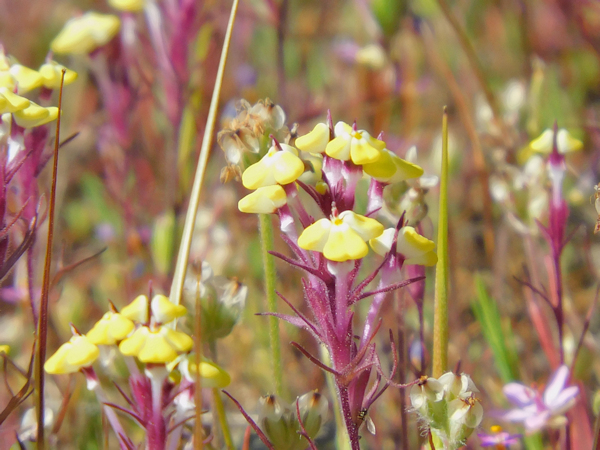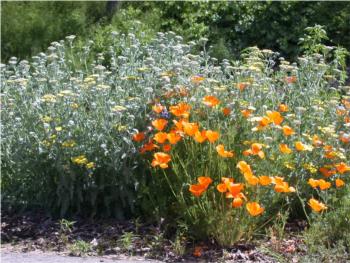Working to Keep Mariposa's Rural Charm and Character Alive
The county of Mariposa is comprised of
many rural communities including Mariposa, Midpines, Bootjack, Catheys Valley, El Portal, and
Hornitos. In north county lie the communities of Coulterville and Greeley
Hill. And over to the east are Fish Camp and Wawona.
Population county-wide is approximately 17,000. The county seat
is the town of Mariposa with one of the oldest courthouses in the state.
Mariposa
County was one of the original 27 counties in California and covered
one-fifth of the state in 1850. It is an historic gold mining town
retaining much of its gold rush ambiance and small-town charm.
Two of the three western Sierra gateways accessing Yosemite National
Park, one of the most scenic and beautiful national parks in the world, are in Mariposa County.
Mariposa has a rich past and is steeped in California history. Mariposans are proud of the strong agricultural heritage with many cattle ranches and farms, some of which have been in the same families for generations. We are also proud of our County Fair and support next generation participation with the help of many local organizations who recognize the importance of tradition and education of our youth.
Most residents are civic-minded and eager to preserve the natural, unspoiled beauty and rural character of their community. While tourism is an economic mainstay for local businesses, there is a thriving local culture that insists on preserving the history, environment, and friendly character that makes where we live a “special place”.
The natural beauty of Mariposa county has inspired artists for generations. A vibrant artistic and music community are a vital part of local life. Photographers, painters, potters, and other artisans exhibit their work at local galleries while musicians thrill audiences at Music on the Green. Mariposa even has its own nationally recognized symphony orchestra.
We are proud of our history and mining museum which capture the history of the Gold Rush, mining, and the challenging pioneer life that existed here 150 years ago.
There are many opportunities to explore nature through hiking, water rafting, birdwatching and other activities.
KOA and TERRAMOR purchased almost 1,000 acres in 7 parcels on both sides of Highway 140 at the intersections of Triangle, Yosemite Oaks and Allred Rds. In December 2021, the corporation moved forward with a preliminary application which is in process at Mariposa County Planning and our group has reviewed the documentation. The projects as proposed present an existential threat to all residents of the county, most specifically those residents living on contiguous properties or on any roads that are in the immediate vicinity of the proposed developments. These developments are excessive in size and resource use and will negatively impact current residents who rely on wells for water, easily passable and accessible roads free of excessive traffic caused by a development of this size, and peaceable enjoyment of their properties, free from trespass, increased fire and other hazards such as sewage, noise pollution and depletion of natural resources due to overdevelopment. In addition, the corporation plans to rezone in order to further commercialize the property for future development.


Mariposa County is located in central California on the western slopes of the central Sierra Nevada. Elevation in the County ranges from approximately 300 feet along the western boundary to over 10,000 feet in the mountainous eastern part. The western half of the County consists of gently sloping foothills with generally thin soils and hard underlying metamorphic bedrock.
The wide range of habitats and habitat types in Mariposa County contributes to its biodiversity.
Additionally, the rural nature of Mariposa County, combined with a large proportion of government land ownership, serve to protect these habitats where they might otherwise be lost.
Mariposa County is home to several Special-status plant and animal species. These species are designated as such and protected by various state and federal laws because they are relatively rare entities either because they live in a limited habitat or because humans adversely affect their habitats.


A few of the plant species with Special Status known to occur nearby or within the proposed KOA/Terramor project area include Mariposa Clarkia ( Clarkia biloba ssp.
australis ), Mariposa Cryptantha ( Cryptantha mariposae ), and Shaggyhair Lupine ( Lupinus spectabilis ).
Some of the Special-status
animal species known to occur nearby or within the proposed project area include California Red-legged Frog ( Rana draytonii ), Foothill Yellow-legged Frog ( Rana boylii ), Western Pond Turtle ( Emys marmorata ), and American Badger ( Taxidea taxus ).

Mariposa County is located within the general territory of the Central and Southern Sierra Miwuk. The Sierra Miwuk (Central and Southern) occupied the territory between the Mokelumne and Fresno rivers, as well as the full width of the west slope of the Sierra Nevada, from the edge of the Central Valley to the Sierran crest.
Mariposa County’s rich and diverse heritage includes Native American settlement,
Spanish exploration, Mexican land grants, gold mining, logging, environmental causes,
cattle ranching, unique geological phenomena, and one of the first and most spectacular national parks.

The Southern Sierra Miwuk Nation (SSMN)are people indigenous to the area of this region –Mariposa/Yosemite. The SSMN council is active in the community serving their members and the broader community with native programs and a local food bank at the Miwumati Family Healing Center. Local treaties signed by ancestors of the Southern Sierra Miwuk Nation were never ratified and hidden away by Congress. The impacts of the Gold Rush from the influx of miners and government/state policies aimed at dispossessing Natives
from the ancestral land are still felt today. The SSMN continues to fight for federal acknowledgment with a petition that started in 1982.
More information about the SSMN can be found on their website at southernsierramiwuknation.org

Red Barn Historic Site
created with
WordPress Website Builder .